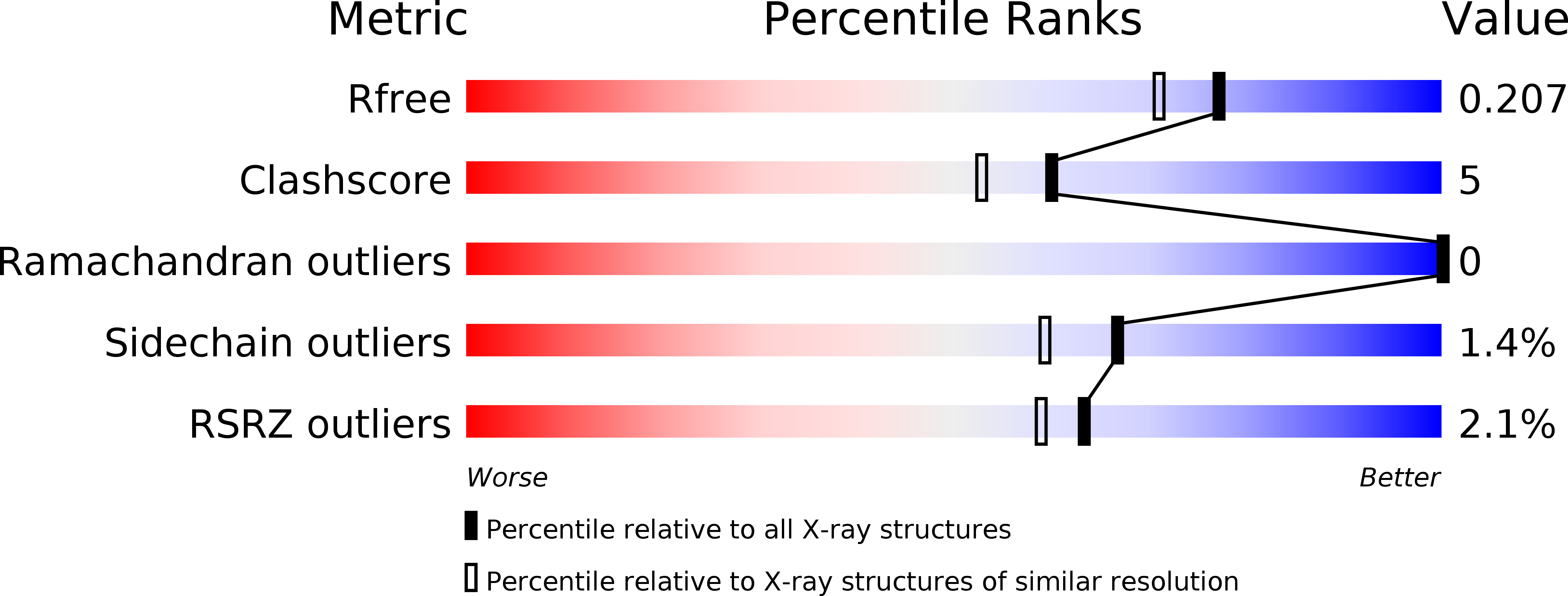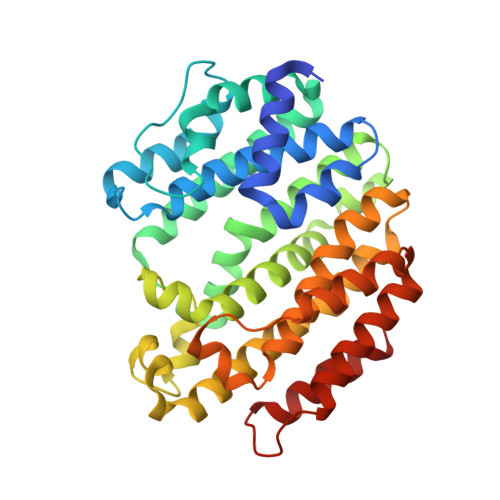Structural insights into the catalytic mechanism of human squalene synthase.
Liu, C.I., Jeng, W.Y., Chang, W.J., Shih, M.F., Ko, T.P., Wang, A.H.J.(2014) Acta Crystallogr D Biol Crystallogr 70: 231-241
- PubMed: 24531458
- DOI: https://doi.org/10.1107/S1399004713026230
- Primary Citation of Related Structures:
3WEF, 3WEG, 3WEH, 3WEI, 3WEJ, 3WEK - PubMed Abstract:
Squalene synthase (SQS) is a divalent metal-ion-dependent enzyme that catalyzes the two-step reductive `head-to-head' condensation of two molecules of farnesyl pyrophosphate to form squalene using presqualene diphosphate (PSPP) as an intermediate. In this paper, the structures of human SQS and its mutants in complex with several substrate analogues and intermediates coordinated with Mg2+ or Mn2+ are presented, which stepwise delineate the biosynthetic pathway. Extensive study of the SQS active site has identified several critical residues that are involved in binding reduced nicotinamide dinucleotide phosphate (NADPH). Based on mutagenesis data and a locally closed (JK loop-in) structure observed in the hSQS-(F288L)-PSPP complex, an NADPH-binding model is proposed for SQS. The results identified four major steps (substrate binding, condensation, intermediate formation and translocation) of the ordered sequential mechanisms involved in the `1'-1' isoprenoid biosynthetic pathway. These new findings clarify previous hypotheses based on site-directed mutagenesis and biochemical analysis.
Organizational Affiliation:
Institute of Biological Chemistry, Academia Sinica, Taipei 11529, Taiwan.
















